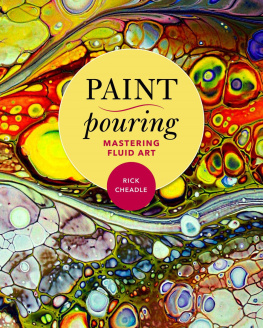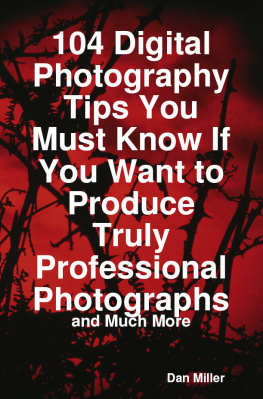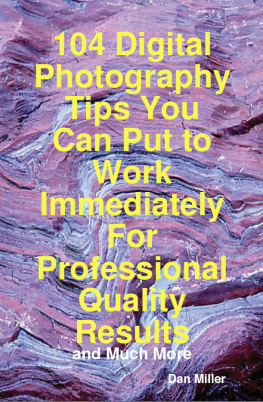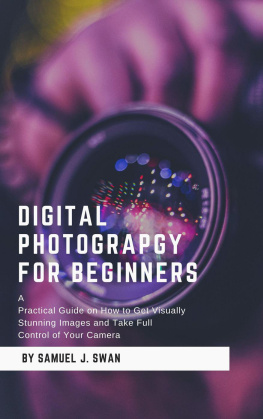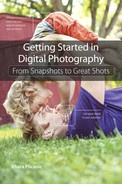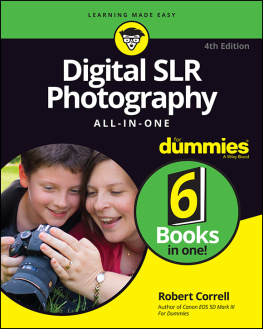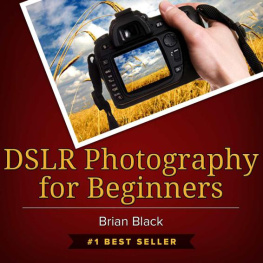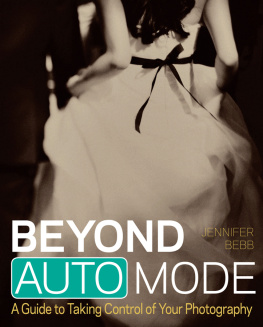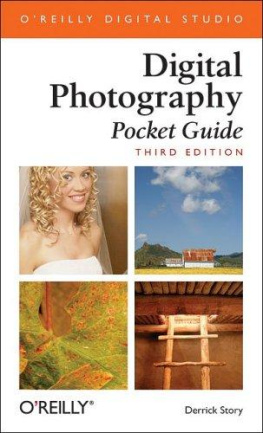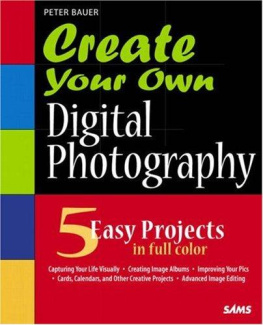Photography Made easy
The Beginners Guide to Learning Digital Photography In A Weekend
Rick Cheadle
Copyright 2016
rickcheadle.com
Introduction
I want to thank you for purchasing the book, The Beginners Guide to Learning Digital Photography In A Weekend
There are different types of digital cameras on the market such as DSLR, compact cameras (point and shoot), and bridge compact cameras. This book is written for the study of DSLR cameras.
Are you an aspiring photographer? Not sure where to start? Have you been taking pictures that your just not happy with?
I was in the same position as you were several years ago when I first got a DSLR camera. I shot everything in full auto mode and I didnt have a clue what all those buttons and knobs were for, I just pointed and shot. This resulted in inconsistent, blurry, unbalanced, over-exposed, or under-exposed photos.
I decided to learn how to take control of my camera and actually learn what all of those buttons and knobs were for and become an actual photographer as opposed to someone that just took pictures.
After studying many books, watching tutorial videos and years of trial and error, I have compiled the best and fastest way to break free of auto mode photography and explore all that my digital camera had to offer.
When reading this book you will see references to settings and various parts of your camera. Since there is a wide range of brands and all cameras are slightly different, I recommend you refer to your owners manual to better understand your particular cameras layout and functionality.
I have included pictures and easy to follow diagrams and I explain things in an easy to understand and simple manner. My goal is to teach you all the important photography basics and enhance your skills so you can capture professional, high quality photographs that you will be proud of. Enjoy!
Table of Contents
Photography, as a powerful medium of expression and communications, offers an infinite variety of perception, interpretation and execution.
- Ansel Adams
What is Digital Photography?
DSLR stands for digital single lens reflex. This refers to how the camera works. When a photographer presses the shutter button, a mirror flips up and exposes light to the sensor which turns this light into a digital image that is stored on the memory card of your camera.
Digital photography captures images via sensors as opposed to photographic film.
The key ingredient in photography is light. Shooting consistently great photos requires you to know how to see and control the light through exposure, light direction, light quality, highlights and shadows.
This book will help show you how!
Chapter 1. The Fundamentals
Exposure
The exposure is the amount of light that reaches the sensor of your camera. These light values are measured in exposure values (EV) or stops.
You must understand the three elements of exposure (aperture, shutter speed and ISO) and how they effect exposure. Learning how to control them is a vital element in your development as a photographer.
Before capturing a photo examine the environment youll be shooting in. Is there enough light? Is there too much light? Do you want to focus on a particular object? Do you want to shoot a photo where everything is in focus?
Your answers to these questions will determine what combination of aperture, shutter speed and ISO you will use for your shot.
Lets explore these three elements.
Your photographs exposure is controlled by The Trinity or what is also called The Exposure Triangle
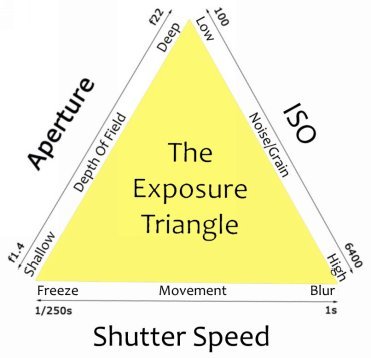
Aperture
The aperture is the opening that light travels through your lens. Think of the aperture as the pupil of your eye.
The amount of light allowed in is controlled by f/stops which are measured in fractions.

To help understand how f/stops control the depth of field, imagine standing in the middle of a field. In the distance you see a sign. What we usually do when we try to focus on something in the distance is squint our eyes or narrow our focus i.e. higher f/stop setting.
So if you want to shoot a photo and try to keep everything in focus you will use a higher f/stop, if you want to shoot a photo and make the background blurry or unfocused you will use a low f/stop. The best way to understand this better is by experimenting with all of your f/stop settings and see the difference each stop makes in your photos.
Shutter Speed
Shutter Speed, also known as exposure time is measured by the length of time the shutter stays open. The longer the shutter stays open, the more light is captured. This causes a blurry effect or a sense of motion. But if you use a fast shutter speed this will enable you to freeze the motion of your subject (like a speeding car or a flying bird).

Adjust shutter speed by selecting S (Nikon) or Tv (Canon) on the exposure control dial of your camera. Adjust shutter speed accordingly (check your manual)
Shutter Speed Cheat Sheet
Shutter Speed | Use For.. |
1/1000 sec | Freeze fast moving vehicles or birds |
1/500 sec | Freeze athletes during game |
1/250 sec | Freeze slow moving subjects |
1/125 sec | Panning fast moving vehicles |
1/60 sec | Pan moving objects near camera |
1/30 sec | Pan fast moving at distance |
1/15 sec | Pan fast moving animals |
1/8 sec | Blur fast moving water close to camera |
1/4 sec | Blur people walking |
1/2 sec | Blur slow moving water |
1 second or under | Milky water effect |
ISO
ISO is the cameras level of sensitivity to light . By using a higher ISO number you can adjust your cameras sensor to have a higher sensitivity to light. But with the increased sensitivity there will be a lower quality of exposure because of noise or grainy image.
I usually leave my ISO setting on 200 and adjust as needed depending on each lighting situation. As with all the settings with your camera, the best way to understand this is to experiment by using all of the ISO settings and examine the results of each shot.

An important thing to understand about ISO is that each increase of ISO doubles the light sensitivity of the camera sensor. So ISO 400 allows twice as much light in as ISO 200 and so on.
Chapter 2. Depth Of Field
I also refer to this as depth of focus. When we view an image, there is a portion that is in focus and the rest is out of the range of focus. If you want to shoot a shallow depth of field , the focus should be on your subject and the background will be blurred or unfocused. Example below


